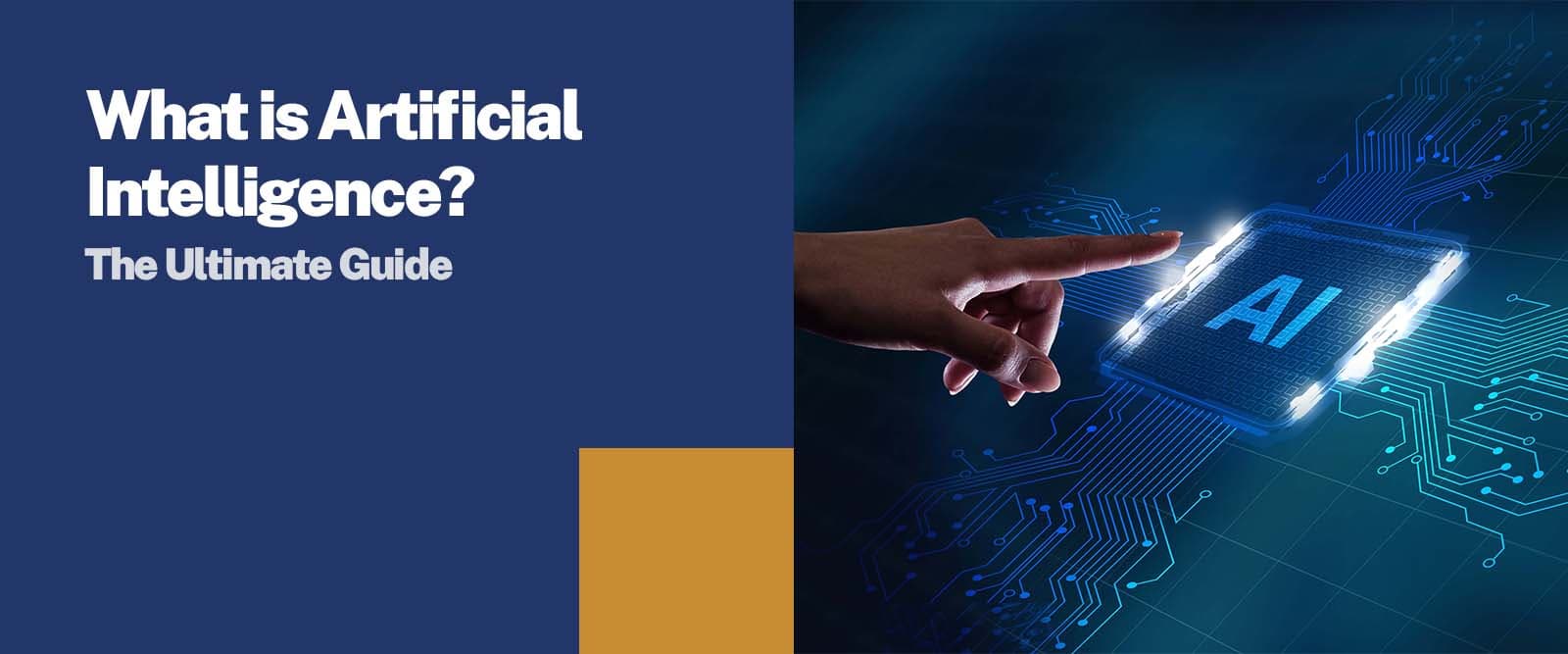5800 students unlocked their dream jobs with UG/PG programs in top colleges. Apply Now!
What is Artificial Intelligence?
Artificial intelligence (AI) is a branch of computer science and engineering that deals with the creation of intelligent machines that can perform tasks that would normally require or rely on human intelligence, such as visual perception, speech recognition, decision-making, and language translation. That is artificial intelligence definition in a nutshell.
There are several different types of AI, including rule-based systems, expert systems, evolutionary algorithms, and machine learning.
AI technology is used in a wide range of applications, including self-driving cars, personal assistants, and medical diagnosis systems. The field of AI is constantly evolving and advancing, with breakthroughs and discoveries being made regularly. For its widespread use, the field of artificial intelligence offers huge career opportunities. If you want to start your career in this field, you can pursue a Master of Computer Applications (MCA).
An MCA degree is a postgraduate program that is focused on computer science and related applications. The curriculum of an MCA course typically covers a wide range of topics in computer science, including programming, data structures, algorithms, databases, and software engineering.
[Also read: Future scope for MCA]
History of AI
The history of artificial intelligence (AI) dates back to the 1950s when the term was first coined by John McCarthy. Early research in AI focused on creating programs that could perform tasks that typically required human intelligence, such as understanding natural language, recognizing objects, and solving problems.
During the 1950s and 1960s, AI researchers developed early versions of AI programs, known as "expert systems," designed to mimic experts' decision-making abilities in specific fields. However, these early systems were limited in their capabilities and struggled to perform tasks that required common sense or general knowledge.
In the 1980s and 1990s, AI research shifted towards the development of "machine learning" algorithms, which allow systems to improve their performance over time by learning from data. This period saw the emergence of neural networks, a type of machine-learning model inspired by the structure and function of the human brain.
Types of Artificial Intelligence
There are several types of AI, including -
- Reactive Machines: These AI systems can only react to the environment and cannot remember past events or experiences.
- Limited Memory: These AI systems can remember past events and experiences, but only for a limited period.
- Theory of Mind: This type of AI is still in development, but it would be able to understand and simulate human emotions, thoughts, and intentions.
- Self-Aware: This type of AI would have a sense of self and consciousness. It is also still in development.
- Supervised Learning: The model is trained on labelled data, allowing it to predict the output from the input.
- Unsupervised Learning: The model is trained on unlabeled data and must find patterns or features in the data on its own.
- Reinforcement Learning: The model is trained through trial and error, receiving rewards or penalties for certain actions.
What are the Most Used AI Languages?
Several programming languages are commonly used in the field of AI, including -
- Python: Python is a widely-used programming language known for its simplicity and readability. It has a large number of libraries and frameworks available for natural language processing (NLP) and machine learning, making it a popular choice for building chatbots.
- JavaScript: JavaScript is a popular language for building web-based applications and can also be used to create chatbots. Several JavaScript libraries and frameworks are available for building chatbots, such as Microsoft Bot Framework and Botkit.
- Java: Java is another popular language for building chatbots. It offers a wide range of libraries and frameworks, such as the AIML library, that can be used for NLP and machine learning.
- C# and .Net: C# is a popular language for building Windows-based applications, and it can also be used to create chatbots. The .Net framework offers a range of libraries and frameworks, such as Microsoft Bot Framework, that can be used for building chatbots.
- PHP: PHP is a server-side scripting language that can be used to create chatbots. There are several PHP libraries and frameworks available for building chatbots, such as BotMan and PHP-Telegram-Bot.
- LISP: LISP is an AI-specific programming language that is based on the mathematical theory of computation and is used for AI research and development.
- Prolog: Prolog is a programming language particularly well suited to AI, as it is based on the principles of logic and reasoning.
- Julia: Julia is a high-performance language that is used for numerical computing and machine learning.
Note: The choice of programming language depends on the specific task and project, and some languages may be more suitable than others depending on the requirements.
[Also read: Coding Language For Chatbots]
AI Applications and Their Implementation
AI can be applied in a variety of different applications and domains, each with its own unique set of algorithms and techniques. Here are a few examples of how AI is used in different applications:
- Computer Vision: AI-powered computer vision systems can analyse images and videos to identify objects, detect patterns, and recognize faces. These systems use algorithms such as convolutional neural networks (CNNs) and deep learning to analyse visual data.
- Natural Language Processing (NLP): AI-powered NLP systems can process and understand human language, enabling tasks such as language translation, sentiment analysis, and text generation. These systems use algorithms such as recurrent neural networks (RNNs) and transformer networks to process language data.
- Robotics: AI-powered robots can be programmed to perform a wide range of tasks, from simple automation to complex decision-making. These systems use reinforcement learning and motion planning algorithms to control the robot's actions.
- Self-driving cars: Self-driving cars use a combination of sensors and AI algorithms to navigate the road and make decisions. These systems use computer vision to detect obstacles, deep learning to predict the behaviour of other cars and road users, and motion planning to determine the best path to take.
- Healthcare: AI-powered healthcare systems can analyse medical data to help doctors diagnose diseases, predict patient outcomes, and develop personalised treatment plans. These systems use algorithms such as machine learning and deep learning to analyse medical data.
- Fraud detection: AI-powered fraud detection systems can analyse financial transactions to detect patterns that indicate fraud. These systems use algorithms such as anomaly detection and rule-based systems to identify unusual transactions.
- Customer service chatbot: AI-powered customer service chatbot can provide automated customer service, answering common customer queries and providing relevant information. These systems use natural language processing (NLP) to understand customers' requests and machine learning to generate responses.
Conclusion
While an MCA programme (with specialisation in AI and ML) can provide a good scope for learning AI languages, there are other ways of learning them by yourself. There are many certifications available that can help you learn different languages on top of your degree programme. Sunstone, for example, is one such education service provider that offers such opportunities. When you sign up with Sunstone, you can access hundreds of hours of industry-focused training modules that can help find a job and start your career.
FAQ - Artificial Intelligence
Who is the father of AI?
The field of AI has developed over time through the contributions of many researchers, scientists, and thinkers. However, some of the key figures in the early history of AI include Alan Turing, who developed the concept of the universal machine and proposed the Turing Test as a measure of intelligence; John McCarthy, who coined the term "artificial intelligence" and developed early programming languages for AI; and Marvin Minsky, who co-founded the Massachusetts Institute of Technology's (MIT) AI lab and made significant contributions to the field of AI.
What is the benefit of artificial intelligence?
The benefits of artificial intelligence (AI) include increased efficiency and accuracy in tasks such as data analysis, decision-making, and automation of repetitive processes. AI can also be used to improve products and services, as well as to develop new technologies. Additionally, AI can assist in areas such as healthcare and education, helping doctors and teachers to better diagnose and treat patients and students, respectively.
HELP
Take the first step towards your dream job.
ABOUT THE AUTHOR


